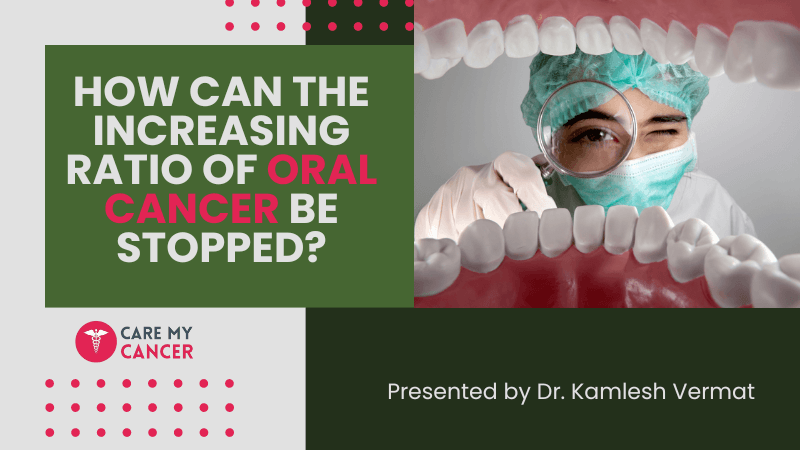Oral cancer, a malignancy affecting the mouth and throat, has seen a concerning uptick in recent years. As the incidence continues to rise, it’s imperative to explore ways to combat this disease effectively. This comprehensive guide delves into the various factors contributing to the escalation of oral cancer and provides actionable steps individuals can take to mitigate their risk and promote oral health.
1. About Oral Cancer
Oral cancer encompasses malignancies affecting the lips, tongue, cheeks, floor of the mouth, hard and soft palate, sinuses, and throat. It is often preceded by precancerous lesions, making early detection crucial for successful treatment.
1.1 Risk Factors
- Tobacco Use: Smoking and smokeless tobacco significantly increase the risk of oral cancer.
- Alcohol Consumption: Excessive alcohol consumption is a major risk factor, especially when combined with tobacco use.
- HPV Infection: Certain strains of the human papillomavirus (HPV) have been linked to oral cancer.
- Poor Oral Hygiene: Neglecting oral hygiene practices can contribute to the development of oral cancer.
- Dietary Factors: A diet low in fruits and vegetables may elevate the risk of oral cancer.
2. Signs and Symptoms
Early detection of oral cancer greatly improves treatment outcomes. Recognizing the signs and symptoms can prompt timely medical intervention.
2.1 Common Symptoms
- Persistent mouth ulcers
- Unexplained bleeding in the mouth
- Chronic sore throat
- Difficulty swallowing or chewing
- Lump or thickening in the mouth or neck
3. Screening and Diagnosis
Regular dental check-ups and screenings play a pivotal role in detecting oral cancer in its early stages.
3.1 Diagnostic Procedures
- Oral Examination: Dentists perform visual inspections of the mouth, looking for abnormalities.
- Biopsy: If suspicious lesions are found, a biopsy is conducted to confirm the presence of cancerous cells.
- Imaging Tests: X-rays, CT scans, and MRIs help assess the extent of cancer spread.
4. Prevention Strategies
Preventive measures are key to reducing the incidence of oral cancer and promoting overall oral health.
4.1 Lifestyle Modifications
- Tobacco and Alcohol Abstinence: Avoiding tobacco products and moderating alcohol consumption significantly reduce the risk of oral cancer.
- Healthy Diet: A diet rich in fruits and vegetables provides essential nutrients that support oral health.
- Sun Protection: Limiting sun exposure and using lip balm with SPF can prevent lip cancer.
4.2 Regular Dental Visits
Routine dental check-ups enable early detection of oral abnormalities, facilitating prompt intervention if necessary.
5. Treatment Options
Treatment for oral cancer depends on various factors, including the stage and location of the cancer.
5.1 Treatment Modalities
- Surgery: Surgical removal of the tumor is often the primary treatment for localized oral cancer.
- Radiation Therapy: Radiation therapy may be used alone or in combination with surgery to eradicate cancer cells.
- Chemotherapy: Chemotherapy is sometimes employed to shrink tumors before surgery or to target cancer cells that have spread.
6. Support and Rehabilitation
Navigating oral cancer treatment can be challenging, both physically and emotionally. Support services and rehabilitation programs play a crucial role in improving quality of life for patients.
6.1 Supportive Care
- Counseling: Mental health support helps patients cope with the emotional toll of cancer diagnosis and treatment.
- Nutritional Guidance: Nutritionists provide tailored dietary recommendations to support patients’ nutritional needs during treatment.
- Speech and Swallowing Therapy: Rehabilitation specialists assist patients in regaining speech and swallowing function post-treatment.
7. How can the increasing ratio of oral cancer be stopped
The rising incidence of oral cancer necessitates concerted efforts at individual, community, and societal levels to curb its prevalence.
7.1 Public Awareness Campaigns
Educational initiatives aimed at raising awareness about the risk factors and symptoms of oral cancer can encourage early detection and prompt treatment-seeking behavior.
7.2 Advocacy for Tobacco Control
Stricter tobacco control policies, including increased taxation, public smoking bans, and comprehensive cessation programs, are essential in reducing tobacco-related oral cancer cases.
7.3 HPV Vaccination
Promoting widespread HPV vaccination can prevent HPV-related oral cancers, offering long-term protection against this preventable disease.
7.4 Research and Innovation
Investment in research to better understand the underlying mechanisms of oral cancer and develop novel prevention and treatment strategies is paramount in combating this disease.
FAQs (Frequently Asked Questions)
Q: Can oral cancer be prevented?
Yes, adopting a healthy lifestyle, including tobacco cessation, moderation of alcohol consumption, and maintaining good oral hygiene, can significantly reduce the risk of oral cancer.
Q: What are the treatment options for oral cancer?
Treatment options for oral cancer may include surgery, radiation therapy, chemotherapy, targeted therapy, and immunotherapy, depending on the stage and extent of the disease.
Q: Is oral cancer curable?
The prognosis for oral cancer depends on various factors, including the stage at diagnosis and the effectiveness of treatment. Early detection and prompt intervention improve the chances of successful treatment outcomes.
Q: How often should I undergo oral cancer screening?
Regular dental check-ups typically include oral cancer screenings. It’s recommended to undergo a screening at least once a year, or more frequently if you have risk factors such as tobacco or alcohol use.
Q: What can I do if I notice symptoms of oral cancer?
If you experience persistent symptoms such as mouth ulcers, unexplained bleeding, or difficulty swallowing, it’s crucial to seek medical attention promptly. Your dentist or healthcare provider can perform a thorough evaluation and recommend further diagnostic tests if necessary.
Q: Are there support services available for oral cancer patients?
Yes, many hospitals and cancer centers offer support services such as counseling, nutritional guidance, and rehabilitation programs to help patients cope with the physical and emotional challenges of oral cancer treatment.
Conclusion:
Halting the increasing ratio of oral cancer requires a multifaceted approach encompassing prevention, early detection, effective treatment, and ongoing support for patients. By raising awareness, advocating for tobacco control measures, promoting vaccination, and advancing research, we can collectively combat this concerning trend and improve outcomes for individuals affected by oral cancer.

